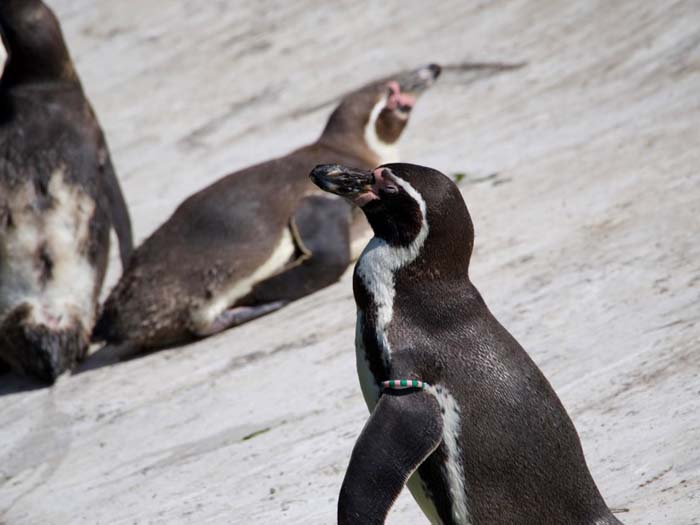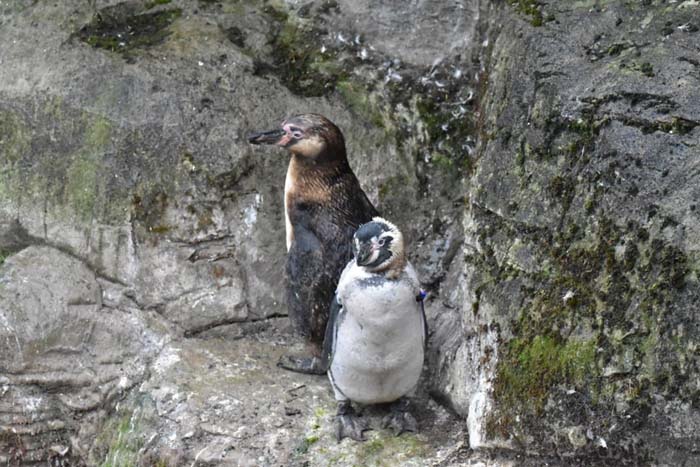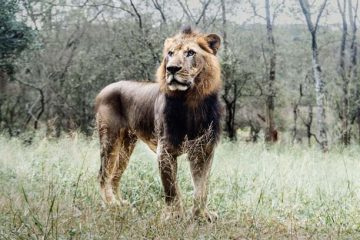News Desk : dhakamirror.com
Originally from South America, the Humboldt penguin lives on the coasts of Peru and Chile. Its closest relatives are the African penguin, the Magellanic penguin and the Galpagos penguin. Humboldt penguins are extremely sociable, inquisitive and communicative birds, some would even say they are the friendliest of them all.
These birds are excellent swimmers. Their torpedo-shaped bodies can shoot through the water at speeds of 30 miles an hour. And they can dive up to 500 feet underwater in search of snacks such as fish, shrimp, and squid.
Humboldt penguins form a strong bond and remain with the same partner for their entire lives. Before mating the animals undergo a moulting period, during which they do not go out to sea and have to starve. By the end of the moult, they venture into the sea to forage and then come back to their breeding grounds. Commonly 1-2 eggs are laid and incubated for an estimated 40 days. Both the male and female take turns to incubate their eggs.
Since 1988, The International Union for the Conservation of Nature (IUCN) has listed the penguins on its vulnerable list, and Humboldt hunting has been illegal since 1995. Scientists consider the Humboldt penguin to be vulnerable to extinction due to Natural climate variation, human-induced climate change and overfishing of their preferred prey species.
Fun facts about penguins
o The Welsh word for penguin is pengwin. Pen means ‘head’ and gwyn means ‘white’.
o Penguins have waterproof feathers. Their own built-in wetsuit!
o Penguins have a protective lens that covers their eyes when they go underwater. Their own built-in goggles!
o Emperor penguins are the biggest of them all, at nearly four feet tall. Little penguins are the, well, littlest, at just 16 inches.
o Penguins have very distinctive calls and can recognise each other among a whole bunch of noisy penguins.
o A penguin’s tongue is covered with spines, which help it catch and hold onto its prey.





